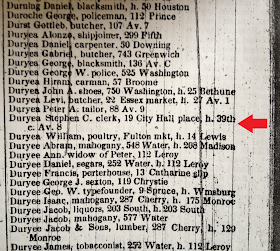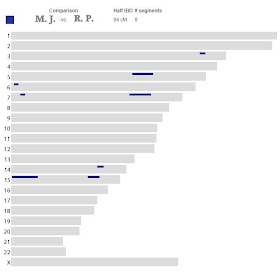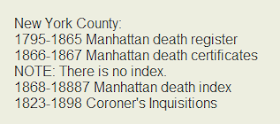23andMe has launched some new features to assist in figuring out how it is that your matches match you. You can type in your family tree. This is a Beta version and is not cooperating with me for dates and locations. I do not know if this will be a handy reference for your matches or if the site will somehow propose possible connections based on the comparisons of the trees.
You have always been able to list surnames in your profile. Many a match has written to me that we can't be related because they don't recognize any surnames in my profile, and then cut off contact. This is rather silly, especially when the person has only researched one or two generations of their own tree. If everyone knew every ancestral surname on every line for the past 500 years, then genealogical research and DNA studies would not need to exist.
The next feature is a map with locations of your genetic cousins marked in purple.
 |
23andMe
Map of matches of my father |
 |
23andMe
Map of matches of my mother |
Compare the maps of my father versus my mother. My mother has more matches, which we knew, but with a clear concentration in Eastern Europe that my father does not have. The numbers represent how many people claim such a location, so the hidden numbers could be 1 or 20. You have to zoom in to see.
 |
23andMe
Locations in the United States of my mother's closest matches |
Manipulation of the degree of cousinship brought me to the New York area, the only location of my mother's closest cousins in the United States. You can click on the little purple flag to reveal the relation and surprise! All of these locations are for the same cousin. The locations are any places mentioned in the profile, instead of a birthplace, which would have been more useful.
So onward to the next new feature: shared surnames among the matches.
 |
23andMe
Shared surnames among genetic matches for my mother |
I was not surprised to see Cohen as the most frequent surname among my mother's matches. As with the place maps, the common surnames are not the name of the match, but rather any surname mentioned in the profile. I am not sure what the enrichment value means. I figure it is some measure of the degree of commonality of a surname in general.
 |
23andMe
Shared surnames among genetic matches of my maternal uncle |
My mother's brother's matches revealed the Irish surnames. The problem that I am having with these Irish names is that they are so common anyway. Most of the Irish matches have at least one ancestral surname in common with us.
I turned to my father's common surname list next, putting my extensive research to the test.
 |
23andMe
Shared surnames among genetic matches of my father |
I have Marsh and Strong in my paternal ancestral lines. I have been seeing a lot of Adam. Hall and Hickman are interesting because I am working on a possible Hale and Hickman connection from the Strong line.
These new genealogy tools will be useful and are a welcome addition at 23andMe.




























